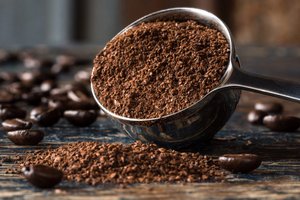
Since a long time ago coffee has been the popular beverage of many. However, our modern society which is all about active and busy lifestyle leaves no time for routine matters; a magic ritual of fresh coffee brewing keeps on being replaced with instant coffee making. The way of doing so is actually based on some reasonable points: it is convenient, simple and inexpensive. In UK where this fragrant drink still dominates at home the shift to dry concentrate solution seems way too prominent – more that 70% of coffee lovers decide on it nowadays.
The concept of water-soluble coffee goes back to 1771 when the so called “coffee compounds” were patented in Britain. Since those times, researchers have always been working on its taste improvements. The things finally changed to better in the early 1960s when freeze-drying was commercially developed.
Freeze-drying is a dehydration process that removes water from a product after it’s frozen and placed inside a vacuum. The method is typically used for preservation in order to extend shelf life of a product, transport it without the need for refrigeration, as well as efficiently retain the taste. The basics of this technology were well-known to ancient Incas who stored meat and vegetables in mountains under extreme temperature conditions: the low air pressure made water vaporize from the frozen food, which as a result then could be stored for years.
During the Second World War the US National Research Corp. (NRC) has been successfully using freeze-drying to preserve penicillin, blood plasma and streptomycin for wounded soldiers. The rough period forced people’s mind to focus on use-it-wisely products; so once the war ended, NRC managed to easily adapt freeze-drying methods for peacetime means and get engaged in orange juice powder production. This is when freeze-drying technology started being massively applied for different types of products; coffee took the leading position among them.
In 1963, Maxwell House released to the market their first freeze-dried coffee brand named Maxim and distinguished by its higher quality. The drink had extra-rich flavor and smell of fresh coffee without any oils added.
2 years later Nestle Company, which since the 1930s has been selling an instant coffee under the Nescafé brand, unveiled its next innovation – freeze-dried Nescafé Gold Blend (marketed in America as Nescafé Taster’s Choice). The brand derived from a patent issued to the chief development engineer of Hills Bros. Coffee, maker of packaged coffee in San Francisco.
Over the next few years all major coffee market players introduced their freeze-dried versions, and to this day continue pleasing its customers with new offerings.
Freeze-dried coffee still has a force in the market and is considered the top quality instant coffee. The beverage has a distinctive rich and smooth flavor, while its taste is very close to the fresh ground coffee without brewing.